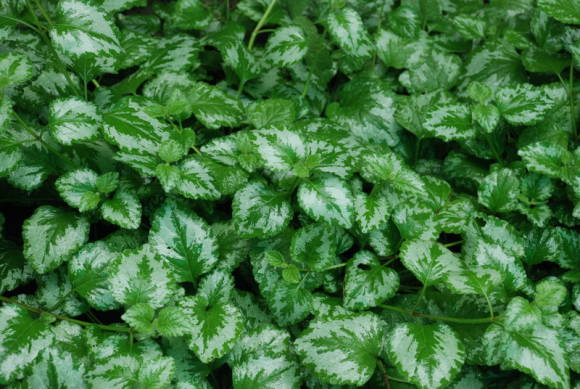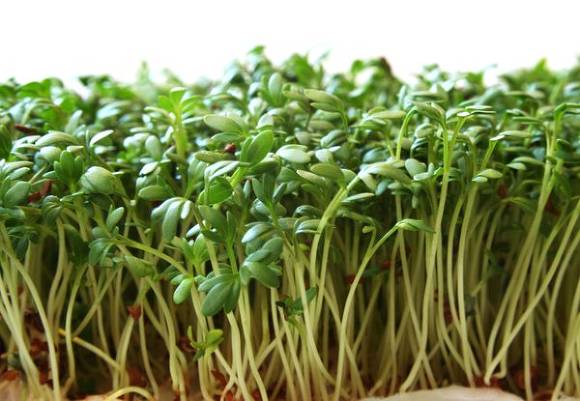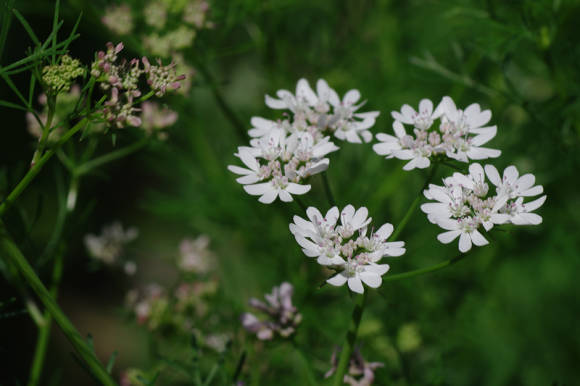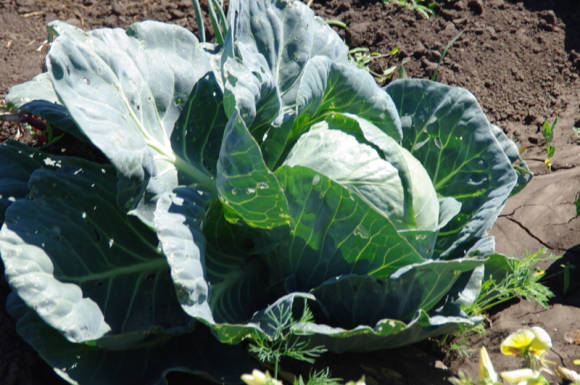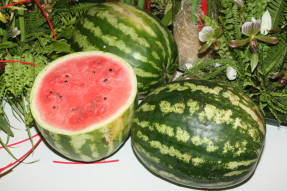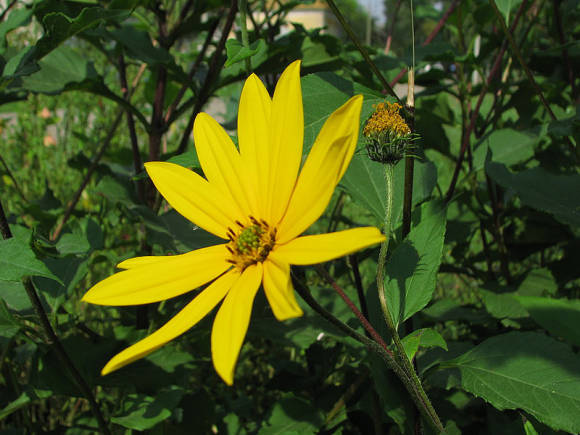
Lingonberry grows in coniferous and mixed forests and peat bogs. It is an evergreen creeping shrub with small leaves.
Lingonberries are loved and appreciated by the people, especially in the northern regions of the country. Everyone here knows these red, juicy, sweet and sour berries with an astringent tart flavor, which ripen in late August - early September.
Chemical composition
Lingonberry berries have the richest chemical composition. They contain about 8% sugars, 2% organic acids, including benzoic acid, which is rarely found in significant quantities. It is this acid that is the strongest antiseptic and suppresses all decay processes, which is why the lingonberry persists for so long. Benzoic acid inhibits the development of various microorganisms and is a good preservative.
Lingonberries contain tannins that give the berries a tart astringent flavor and the glycosides arbutin and vaccinin. Lingonberry berries contain vitamin C - up to 20 mg%, K - 2 mg%, B2 - 0.1 mg%, carotene - 0.1 mg%, a lot of P-active substances - up to 420 mg%. Of the mineral salts, berries contain salts of potassium, calcium, iron, manganese. However, their content is much lower than in other berries.
But the main medicinal qualities are not berries, but lingonberry leaves. They are harvested in April and until mid-May, while the plants have no buds or they are very small. Leaves are dried in well-ventilated areas, inaccessible to sunlight. You can pick the leaves in the fall, after picking the berries. And the leaves collected in summer turn black when dried and are unsuitable for medicinal purposes.
Lingonberry leaves contain up to 9 mg% arbutin, which has antimicrobial and disinfectant effects. They contain numerous organic acids, including ursolic, which affects cholesterol metabolism.

Lingonberry medicinal properties
Lingonberry leaves and young twigs are used fresh and in the form of a decoction or infusion as an encouraging, antidepressant and analgesic agent.
A decoction or infusion from autumn or spring shoots is used for diarrhea, using it cold. It is drunk warm for kidney stones and inflammation of the bladder, as a diuretic, and hot for colds and as an anti-inflammatory agent for joint pain.
In addition, they are used for gastritis with low acidity, liver disease, rheumatism, gout, osteochondrosis, bedwetting in children, they reduce blood sugar in diabetes mellitus. For its preparation 1 tbsp. a spoonful of chopped leaves must be poured with 1 cup of boiling water, insisted in a warm place for 30 minutes, drain. Take 0.2 cups 5 times a day.
Inhalation with a decoction of lingonberry leaves is used for chronic pneumonia and bronchitis. For tonsillitis, chronic tonsillitis and parodanthosis, a decoction of lingonberry leaves is used for rinsing.
Lingonberry berries also help in the treatment of mild forms of diabetes mellitus, are used for gastritis with low acidity, headaches, flu, colds, and mild forms of hypertension.
Lingonberry jam with honey is used for pulmonary tuberculosis and hemoptysis. A mixture of lingonberry fruits with honey in equal proportions also helps. It is boiled over low heat until the berries soften and drink 2-3 tbsp. tablespoons 3-4 times a day with water. Lingonberry juice is used as a lotion as a powerful antimicrobial agent for treating skin conditions, especially scabies and lichens.

For stones in the kidneys and bladder, herbalists use a collection consisting of 2 parts of lingonberry leaves, 1 part of tansy leaves, 1 hour of horsetail herb, 2 hours of wheatgrass rhizomes. To prepare the broth, you need 1 tbsp. pour a spoonful of the crushed mixture with 1 glass of boiling water, boil in a water bath for 10 minutes, strain.Take a decoction of 1 glass in the morning and evening.
For the same purposes, a collection is used, consisting of equal shares of lingonberry leaves, strawberry leaves (preferably forest), juniper fruits, caraway seeds and licorice root. To prepare a medicinal infusion, 1 tbsp. pour a spoonful of the crushed mixture with 1 cup of boiling water, insist in a warm place for 1 hour, strain, take an infusion of 0.75 cups 3 times a day.
In case of kidney stones complicated by pyelonephritis, a collection consisting of 3 hours of lingonberry leaves, 6 hours of ash leaves, 2 hours of oregano herb and 1 hour of hop cones is used. To prepare the broth, you need 1 tbsp. pour a spoonful of the mixture with 1 glass of boiling water, heat in a water bath for 10 minutes, leave for 30 minutes, drain. Take 0.5 cups 3 times a day for 3-4 weeks.
For acute cystitis and stones in the bladder, sitz baths are used. For this, 4-5 tbsp. tablespoons of lingonberry leaves must be chopped, pour 3 liters of boiling water in a saucepan, insist in a warm place for 2 hours, drain. The infusion cooled to 37 ° C should be used for sitz baths lasting 20 minutes. Apply baths daily. The course of treatment is 10-15 procedures.
For diseases of the bladder, an infusion prepared from a collection consisting of 1 teaspoon of lingonberry herb and 3 hours of rowan berries is used. To prepare it, you need 1 tbsp. pour a spoonful of the crushed mixture with 1 glass of boiling water, insist in a thermos for 4 hours, strain. Take 1 glass 3-4 times a day 30 minutes before meals.
In the treatment of cystitis in folk medicine, a collection consisting of equal shares of lingonberry leaves, calendula flowers, chamomile herb, St. John's wort and yarrow herb is used. To prepare the infusion, you need 1 tbsp. pour a spoonful of 1 cup boiling water, insist in a warm place for 20 minutes, strain, take 1 tbsp. spoon 3 times a day.
For the same purpose, a collection consisting of equal parts of lingonberry leaves, knotweed grass and plantain leaves is used. For its preparation 1 tbsp. pour a spoonful of crushed collection with 1 glass of boiling water, insist in a thermos for 2 hours, strain. Take 0.5 cups warm 4-5 times a day. The course of treatment is 3-4 weeks.
For the treatment of cystitis, herbalists also use a collection consisting of equal shares of lingonberry leaves, juniper fruits, knotweed herb and horsetail herb. To prepare the infusion, you need 1 tbsp. pour a spoonful of the mixture with 1 cup boiling water, boil over low heat for 3 minutes, insist in a warm place for 1 hour, strain, add honey to taste. Take 1 glass in the morning and in the evening.
In chronic diseases of the bladder in folk medicine, a rather rare collection is used, consisting of equal shares of the whole lingonberry plant, bearberry leaves, yarrow herb and field bindweed herb. To prepare the infusion, you need 1 tbsp. pour a spoonful of the mixture with 1 glass of boiling water, insist in a warm place for 1.5-2 hours, drain. Take 1 glass 3 times a day. With an exacerbation of the disease, this fee should not be used.
With chronic pyelonephritis, take a delicious medicine from lingonberry jelly. To prepare it, twist the lingonberry berries in a meat grinder, mix in equal parts with sugar, put in a jar and store in a cool place. Take 2 tbsp. spoons for 1 glass of water 2-3 times a day.
Read also the article Lingonberry: useful properties and uses.
Lingonberry Recipes:
- New Year's dessert "Alaska"
- Lingonberry juice with cloves
- Lingonberry seasoning with hot peppers and nuts
- Sauerkraut in Russian
- Lingonberry liqueur on cognac
- Trout steak in lingonberry marinade with cheese soufflé
- Lingonberry juice without sugar
- Homemade honey lingonberry wine
- Lingonberry with sour cream and honey
- Lingonberry mousse with candied fruits
"Ural gardener", No. 34, 2019

